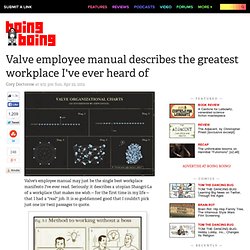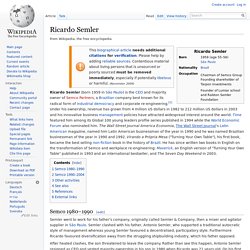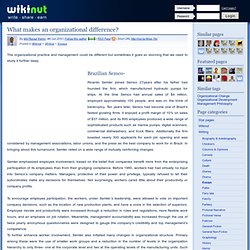

Valve employee manual describes the greatest workplace I've ever heard of. Valve's employee manual may just be the single best workplace manifesto I've ever read.

Seriously: it describes a utopian Shangri-La of a workplace that makes me wish -- for the first time in my life -- that I had a "real" job. It is so goddamned good that I couldn't pick just one (or two) passages to quote. Why do I need to pick my own projects? We’ve heard that other companies have people allocate a percentage of their time to self-directed projects. At Valve, that percentage is 100. Valve Handbook for New Employees. Read Valve's Employee Company Handbook. It's Amazing. [Update] It all sounds too good to be true, but also surprisingly chaotic.
![Read Valve's Employee Company Handbook. It's Amazing. [Update]](http://cdn.pearltrees.com/s/pic/th/employee-company-handbook-27781133)
The whole stacking method for determining compensation sounds like kind of a nightmare though. It would be like a year long season of survivor, all the time. Constantly worrying about who you've allied with and who is your enemy. With every single other person working there being someone who determines what you make, it feels like you'd have to wear a mask of perfection at all times. Also, for all the talk of hiring, the lack of a section on firing was really surprising.
Traditional, hierarchical structures can incorporate fruit bowls, espresso, vacations, massages, and no crunch time. Systems Engineering & Management Company. Ricardo Semler. Semco 1980–1990[edit] Semler went to work for his father's company, originally called Semler & Company, then a mixer and agitator supplier in São Paulo.

Semler clashed with his father, Antonio Semler, who supported a traditional autocratic style of management whereas young Semler favoured a decentralised, participatory style. Furthermore Ricardo favoured diversification away from the struggling shipbuilding industry, which his father opposed. After heated clashes, the son threatened to leave the company. Rather than see this happen, Antonio Semler resigned as CEO and vested majority ownership in his son in 1980 when Ricardo was 21 years old. Attempts to introduce a matrix organisational structure in 1986 failed to achieve desired improvements.[2] In the late 1980's three engineers at Semco proposed setting up a Nucleus of Technological Innovation (NTI) to develop new businesses and product lines which Semler endorsed.
Semco 1990–2004[edit] Other activities[edit] See also[edit] Semco SWOT Analysis. What makes an organizational difference? The organizational practice and management could be different but sometimes it goes so stunning that we need to study it further deep.

Ricardo Semler joined Semco 27years after his father had founded the firm, which manufactured hydraulic pumps for ships. At the time Semco had annual sales of $4 million, employed approximately 100 people, and was on the brink of bankruptcy. Ten years later, Semco had become one of Brazil’s fastest growing firms. It enjoyed a profit margin of 10% on sales of $37 million, and its 800 employees produced a wide range of sophisticated products such as marine pumps, digital scanners, commercial dishwashers, and truck filters. Additionally the firm boasted nearly 300 applicants for each job opening and was considered by management associations, labor unions, and the press as the best company to work for in Brazil.
W. L. Gore and Associates. W.

L. Gore & Associates, Inc. is an American manufacturing company specializing in products derived from fluoropolymers. It is a privately held corporation headquartered in Newark, Delaware. It is best known as the developer of waterproof, breathable Gore-Tex fabrics. History[edit] The company was founded in 1958 by Wilbert (Bill) Lee Gore and his wife Genevieve (Vieve) Walton Gore in Newark. The company operated from the basement of the Gores' home until 1960, when an order from the Denver Water Company for seven and a half miles of Multi-Tet cable made it necessary to expand manufacturing capacity.
Bob Gore joined the company in 1963 upon completion of a Ph.D. in chemical engineering at the University of Minnesota. Bill Gore served as president of the company until 1976, when Bob Gore assumed the position. Charles (Chuck) Carroll, a long-term business leader in the Electronics and Fabrics Divisions, replaced Bob Gore as president in 2000. Culture[edit] Product portfolio[edit]